Affiliate links on Android Authority may earn us a commission. Learn more.
Countries with the fastest 4G LTE in 2016
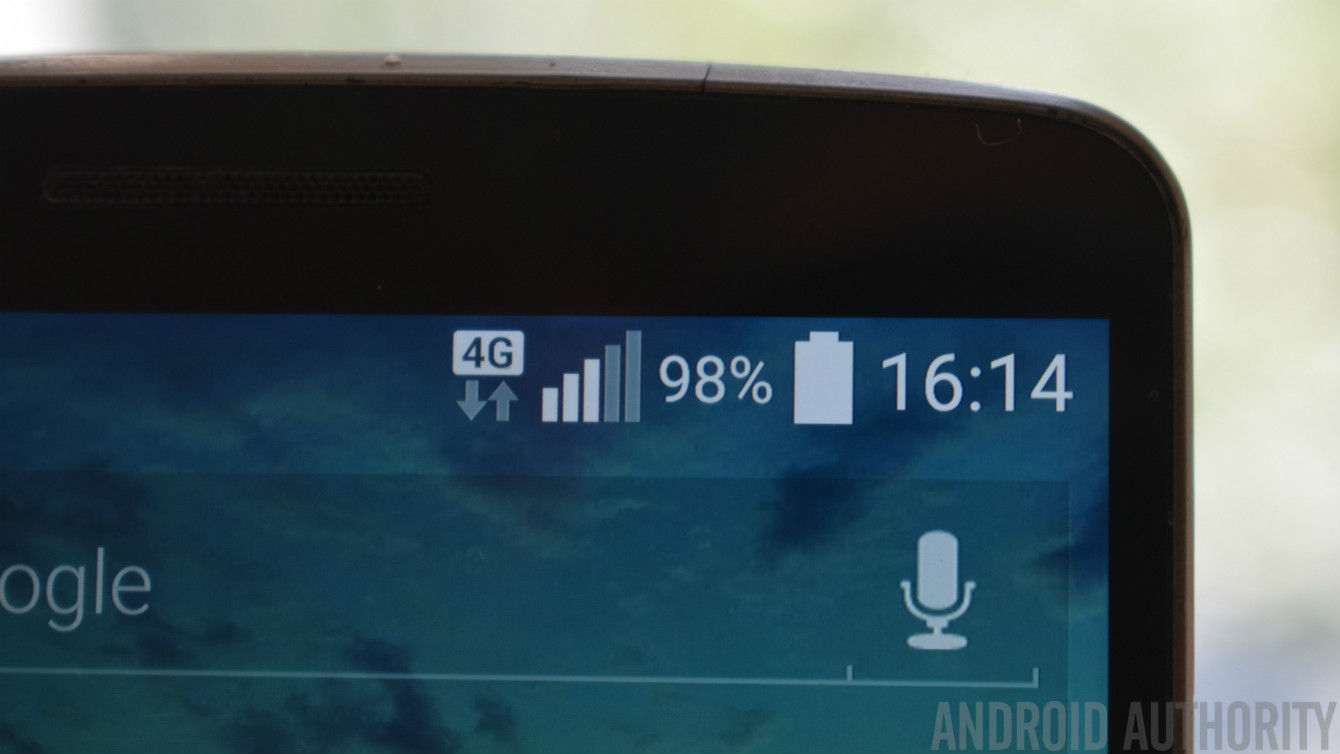
OpenSignal is back with another report into the state of the world’s 4G LTE networks this year, and it makes for some more interesting reading. Compared with last year and even earlier this year, global speeds are up on average, with countries poised to pass the 50 Mbps speed for the first time very soon. While global infrastructure varies, 4G LTE is now also a faster than the world’s typical broadband speeds.
Globally speaking, 4G speeds average out at 17.4 Mbps, with many countries now easily passing 20 Mbps. This is up from an average of just 12.6 Mbps around the same time last year, and the fastest countries have continued to dramatically increase their average download speeds. However, countries with developing infrastructure are still some way behind, such as India which only offers customers an average 4G speed of 6.4 Mbps. Even so, 4G is now a much more prevalent technology across the world than older 3G and 2G connections.
This is certain great for most of us mobile users, so let’s take a look at how 4G LTE varies across the world and how things have changed since last year’s report.
Top 5 fastest countries
- Singapore, 45.9 Mbps
- South Korea, 45.8 Mbps
- Hungary, 40.6 Mbps
- Romania, 35.6 Mbps
- New Zealand, 34.9 Mbps
Unsurprisingly, Singapore and South Korea have managed to maintain their spaces in the top five from last year, and have surpassed the previously leader New Zealand after seeing notable boosts to their average speeds over the past twelve months. Another European country now also makes the top spot, that’s Hungry, and all of the top 5 countries now offer speeds around or in excess of a whopping 35 Mbps on average, with peak speeds being higher still.
An increasing number of 4G users in India and a growth in coverage has put a strain on network capacity.
By comparison, the USA and the UK have seen smaller but still notable increases to their typical 4G LTE data speeds this year than other developed nations. These countries are sat on 13 and 21 Mbps respectively, which is decent but not all that close to the global leaders.
This trend is rather typical across much of Western Europe too, with Germany, Italy, France, Ireland, and Spain seeing speeds in between 20 and 30 Mbps on average. Instead it’s Eastern Europe and the Benelux countries that offer the faster 4G which competes with the best networks in Asia, at least in terms of speed.
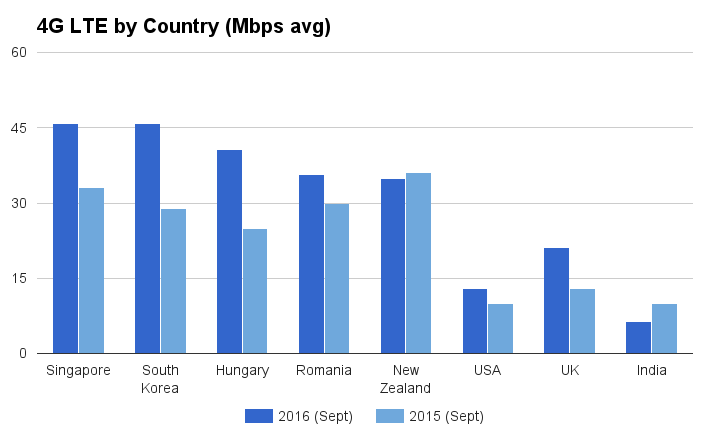
Interestingly, India bucks this trend of faster 4G LTE speeds year over year, as the nation’s speed has fallen from around 10 Mbps to just 6.4 Mbps on average. India’s infrastructure is still under development and it’s quite likely that the increasing number of 4G users, even in the past year, has put a significant strain on national network capacity. That being said, India has seen a significant boost in 4G LTE coverage over the past year, up from just 50% in 2015 to 72% in 2016.
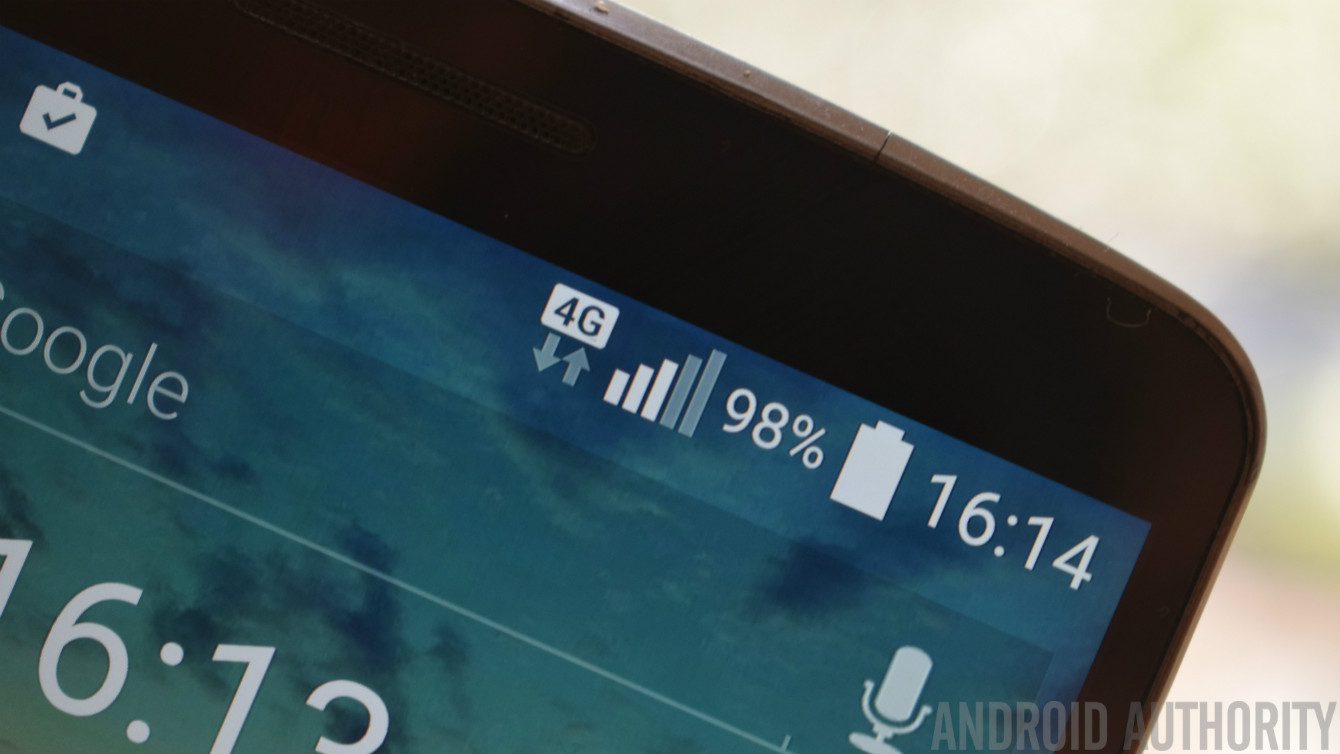
Top 5 countries with the best coverage
- South Korea, 95.7%
- Japan, 92.0%
- Lithuania, 84.7&
- Hong Kong, 84.5%
- Netherlands, 84.1%
The top 5 countries for the best coverage looks pretty similar to last year also. South Korea remains out in front, as does Japan, although some Eastern European countries are now catching up, rivaling Asia both in terms of speed and coverage. South Korea is still able to boast that 4G is virtually as common as 3G and 2G connections, which many other countries are still relying on to fill in the gaps in their LTE rollout plans.
Most of Asia and Europe sees 4G availability in the 70% to 80% range, but some countries still rely on 3G to fill in the gaps. Meanwhile, the US has one of the most extensive 4G networks.
Despite offering lower typical speeds than much of the world, the US manages to compete rather handily on 4G availability, thanks to its early investment into a wide rollout. This is no small feat given the size of the country compared with smaller states that offer comparably coverage.
Unfortunately the UK remains ones of the worst developed countries for 4G coverage, although neighbors France and Germany are just as bad, offering a 4G connection just 49 and 57 percent of the time respectively. While Western Europe offers decent speeds, it is still heavily reliant on older 3G connections in many places.
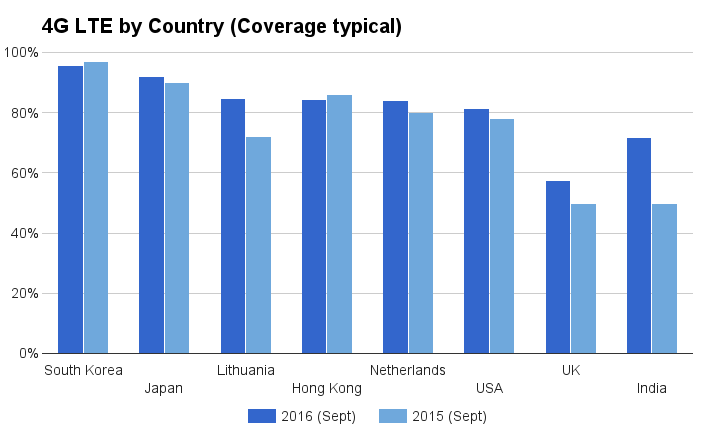
New Zealand, one of the top 5 fastest countries, offers a similarly disappointing 57.9% coverage, as do Romania and Iceland. This just goes to show that raw speed data is no indicator of access or reliability, especially in countries with more difficult geographical features.
India has actually now shot past the UK, and much of Europe, in terms of 4G availability, although this has come at the cost of speed. At this rate, it appears that Indian 4G consumers should have a reliable connection 80 percent of the time by next year. The next stage will be to begin increasing capacity to ensure that users speeds catch up with the rest of the world.
Wireless versus broadband
One other interesting point uncovered by OpenSignal is that many countries’ 4G LTE infrastructure is now quite suitable for use as broadband, barring any data caps, and actually often exceeds the global average speed for a wired connection. At above 30Mbps, many countries now offer wireless connections that outperform regional broadband speeds, and offer coverage that is more accessible in some areas that fibre optic alternatives.
Both broadband and 4G speeds have increased globally by around 5 Mbps over the past year, so 4G is keeping its neck out in front, likely as a result of a high investment into wireless communication over underground wires.
The “sweet spot” in terms of 4G appears to be between 20 and 25 Mbps, making many countries faster than the typical broadband speed of 10.8 Mbps. The 4G global average is dragged down by large countries, like the US, that fall below the typical speed. Even so, the global average of 17.4 Mbps still beats out the typical broadband offering.
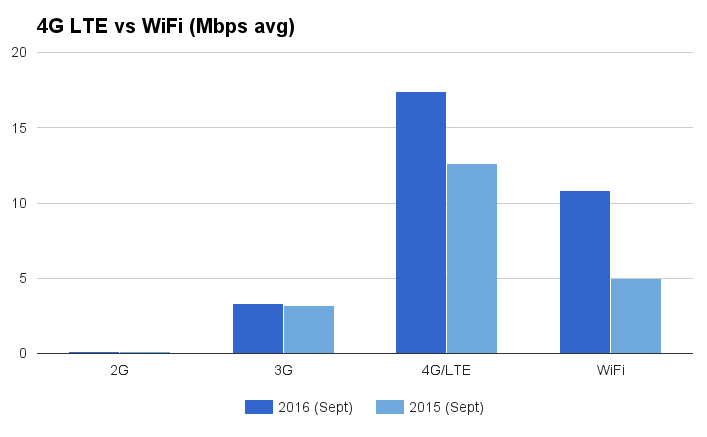
With 5G technologies on the horizon in the next couple of years, wireless speeds and capacity are set to increase at an even faster rate. Of course, a 5G rollout is going to take time, and many countries are still bringing their 4G networks online and increasing availability. Still, eventually we may enter a stage where old wired broadband connections can be completely replaced by higher-speed wireless 5G networks.
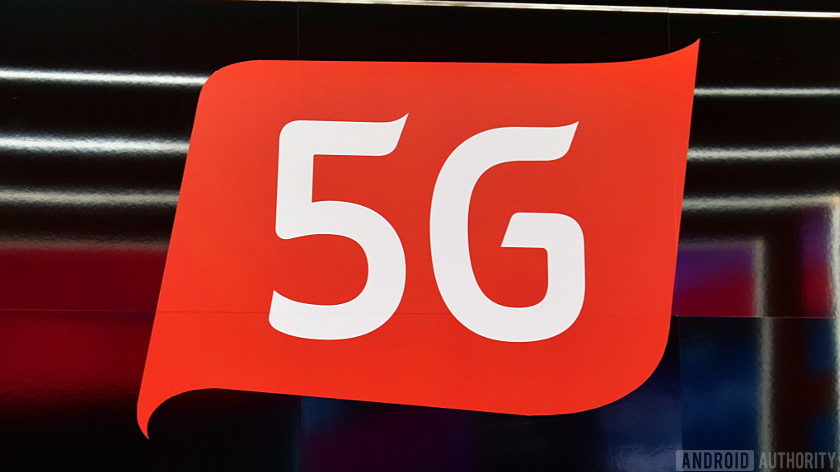
For a closer look at how your home country performed in the rankings this year, and more data and insights into global 4G LTE trends, be sure to check out OpenSignal’s full report.